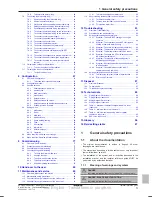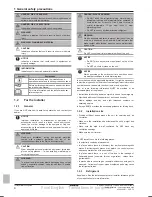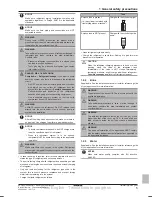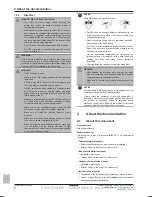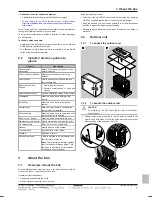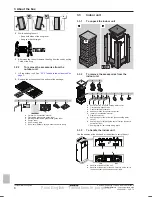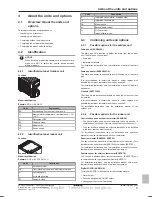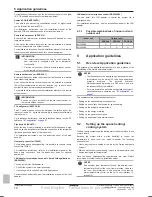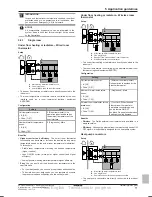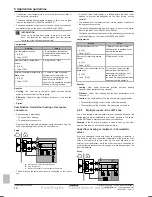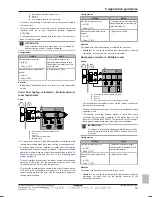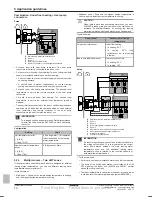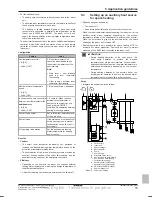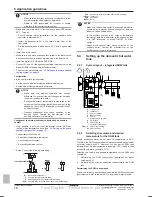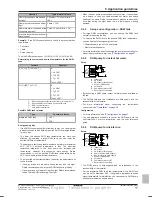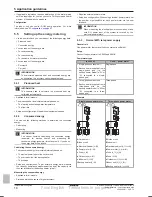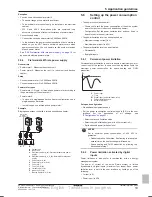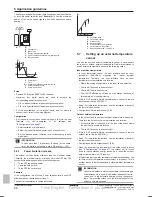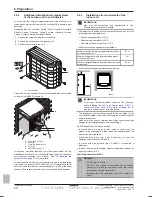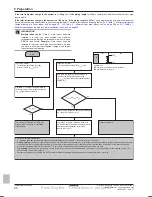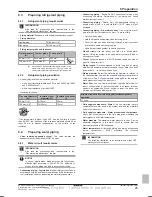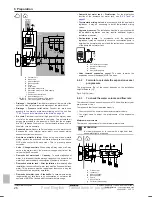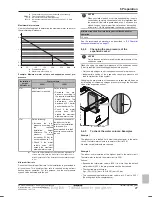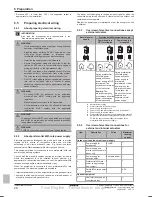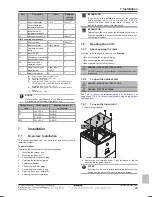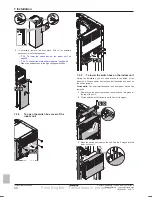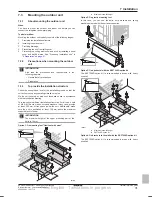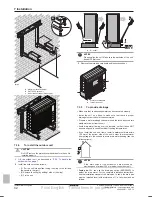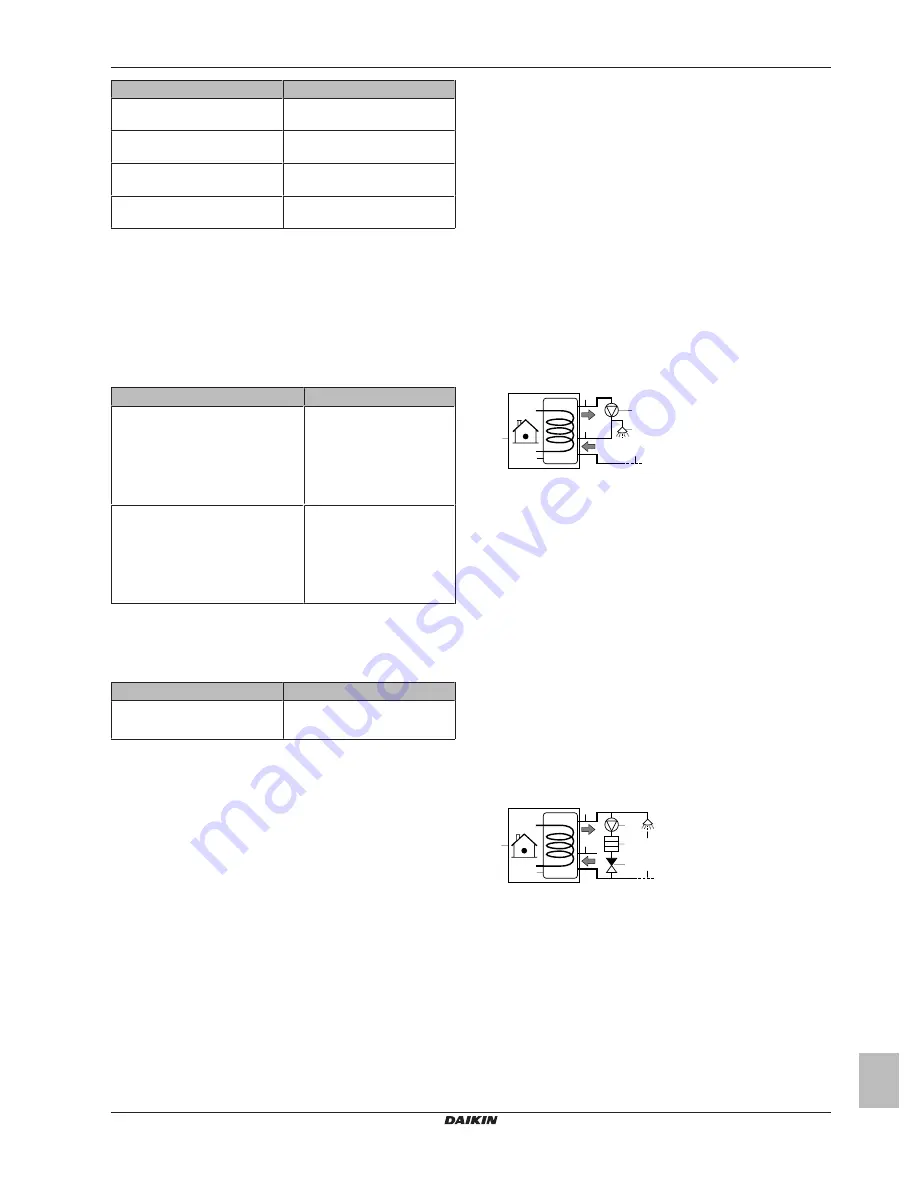
5 Application guidelines
Installer reference guide
17
ERGA04~08DAV3(A) + EHVH/X04+08S18+23DA
Daikin Altherma – Low temperature split
4P495248-1 – 2017.12
Question
Typical water volume
How many showers are needed
per day?
1 shower = 10 min×10 l/min =
100 l
How many baths are needed per
day?
1 bath = 150 l
How much water is needed at the
kitchen sink per day?
1 sink = 2 min×5 l/min = 10 l
Are there any other domestic hot
water needs?
—
Example:
If the DHW consumption of a family (4 persons) per day
is as follows:
▪ 3 showers
▪ 1 bath
▪ 3 sink volumes
Then the DHW consumption = (3×100 l)+(1×150 l)+(3×10 l)=480 l
Determining the volume and desired temperature for the DHW
tank
Formula
Example
V
1
=V
2
+V
2
×(T
2
−40)/(40−T
1
)
If:
▪ V
2
=180 l
▪ T
2
=54°C
▪ T
1
=15°C
Then V
1
=280 l
V
2
=V
1
×(40−T
1
)/(T
2
−T
1
)
If:
▪ V
1
=480 l
▪ T
2
=54°C
▪ T
1
=15°C
Then V
2
=307 l
V
1
DHW consumption (equivalent hot water volume at 40°C)
V
2
Required DHW tank volume if only heated once
T
2
DHW tank temperature
T
1
Cold water temperature
Possible DHW tank volumes
Type
Possible volumes
Integrated DHW tank
▪ 180 l
▪ 230 l
Energy saving tips
▪ If the DHW consumption differs from day to day, you can program
a weekly schedule with different desired DHW tank temperatures
for each day.
▪ The lower the desired DHW tank temperature, the more cost
effective. By selecting a larger DHW tank, you can lower the
desired DHW tank temperature.
▪ The heat pump itself can produce domestic hot water of maximum
55°C (50°C if outdoor temperature is low). The electrical
resistance integrated in the heat pump can increase this
temperature. However, this consumes more energy. Daikin
recommends to set the desired DHW tank temperature below
55°C to avoid using the electrical resistance.
▪ The higher the outdoor temperature, the better the performance of
the heat pump.
▪ If energy prices are the same during the day and the night,
Daikin recommends to heat up the DHW tank during the day.
▪ If energy prices are lower during the night, Daikin recommends
to heat up the DHW tank during the night.
▪ When the heat pump produces domestic hot water, it cannot heat
up a space. In case you need domestic hot water and space
heating at the same, Daikin recommends to produce the domestic
hot water during the night when there is lower space heating
demand.
5.4.3
Setup and configuration – DHW tank
▪ For large DHW consumptions, you can heat up the DHW tank
several times during the day.
▪ To heat up the DHW tank to the desired DHW tank temperature,
you can use the following energy sources:
▪ Thermodynamic cycle of the heat pump
▪ Electrical backup heater
▪ For more information about optimizing the energy consumption for
producing domestic hot water, see
"8 Configuration" on page 47
.
5.4.4
DHW pump for instant hot water
Setup
c
f
a
g
h
i
b
a
Indoor unit
b
DHW tank
c
DHW pump (field supply)
f
Shower (field supply)
g
Cold water
h
Domestic hot water OUT
i
Recirculation connection
▪ By connecting a DHW pump, instant hot water can be available at
the tap.
▪ The DHW pump and the installation are field supply and the
responsibility of the installer.
▪ For more information about connecting the recirculation
connection: see
"7 Installation" on page 29
.
Configuration
▪ For more information, see
"8 Configuration" on page 47
.
▪ You can program a schedule to control the DHW pump via the
user interface. For more information, see the user reference
guide.
5.4.5
DHW pump for disinfection
Setup
c
a
b
d f
e g
h
i
a
Indoor unit
b
DHW tank
c
DHW pump (field supply)
d
Heater element (field supply)
e
Non‑return valve (field supply)
f
Shower (field supply)
g
Cold water
h
Domestic hot water OUT
i
Recirculation connection
▪ The DHW pump is field-supplied and its installation is the
responsibility of the installer.
▪ For the integrated DHW tank, the temperature of the DHW tank
can be set to maximum 60°C. If applicable legislation requires
higher temperature for disinfection, you can connect a DHW pump
and heater element as shown above.
Final English - Tanslations in progress

